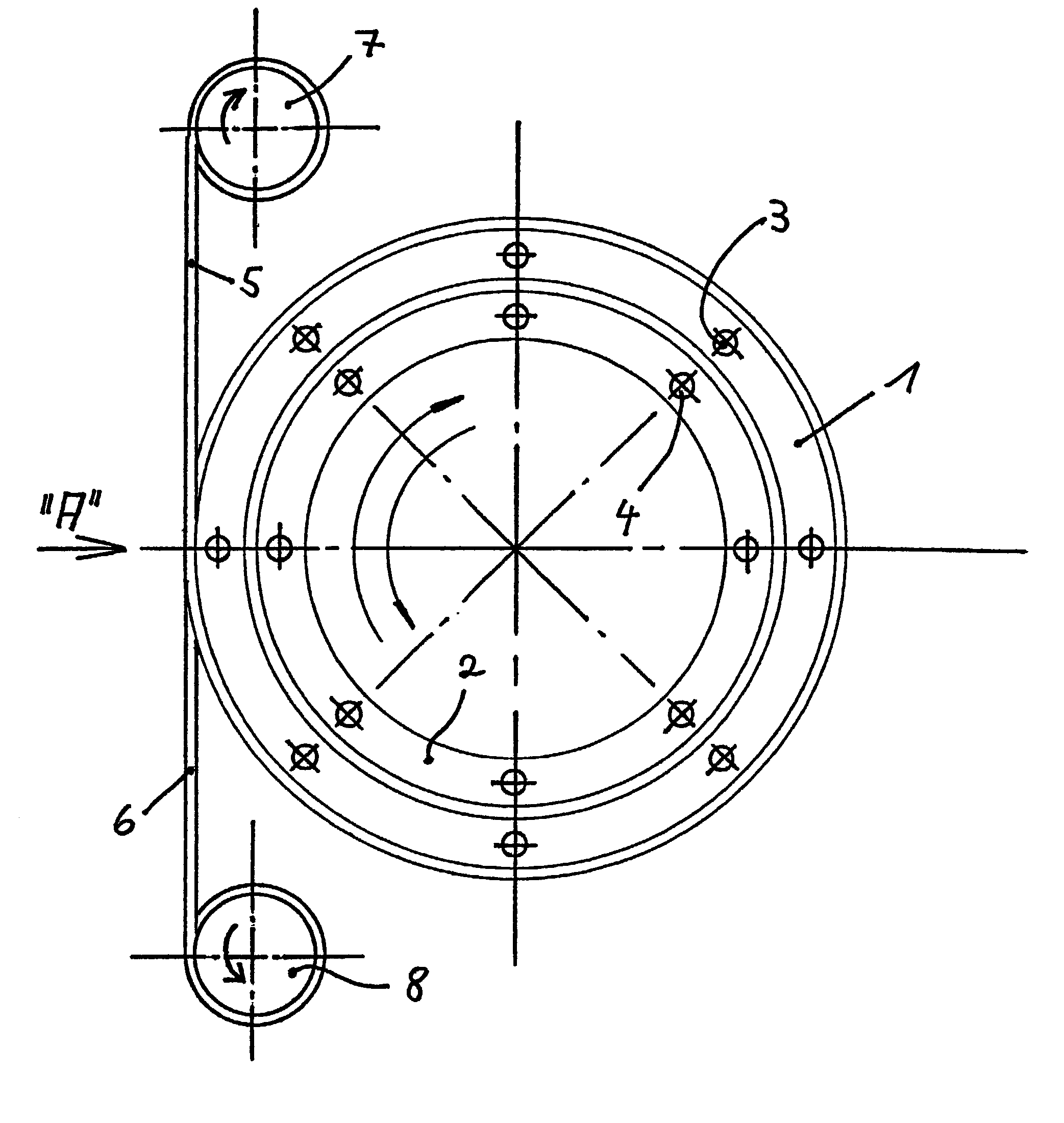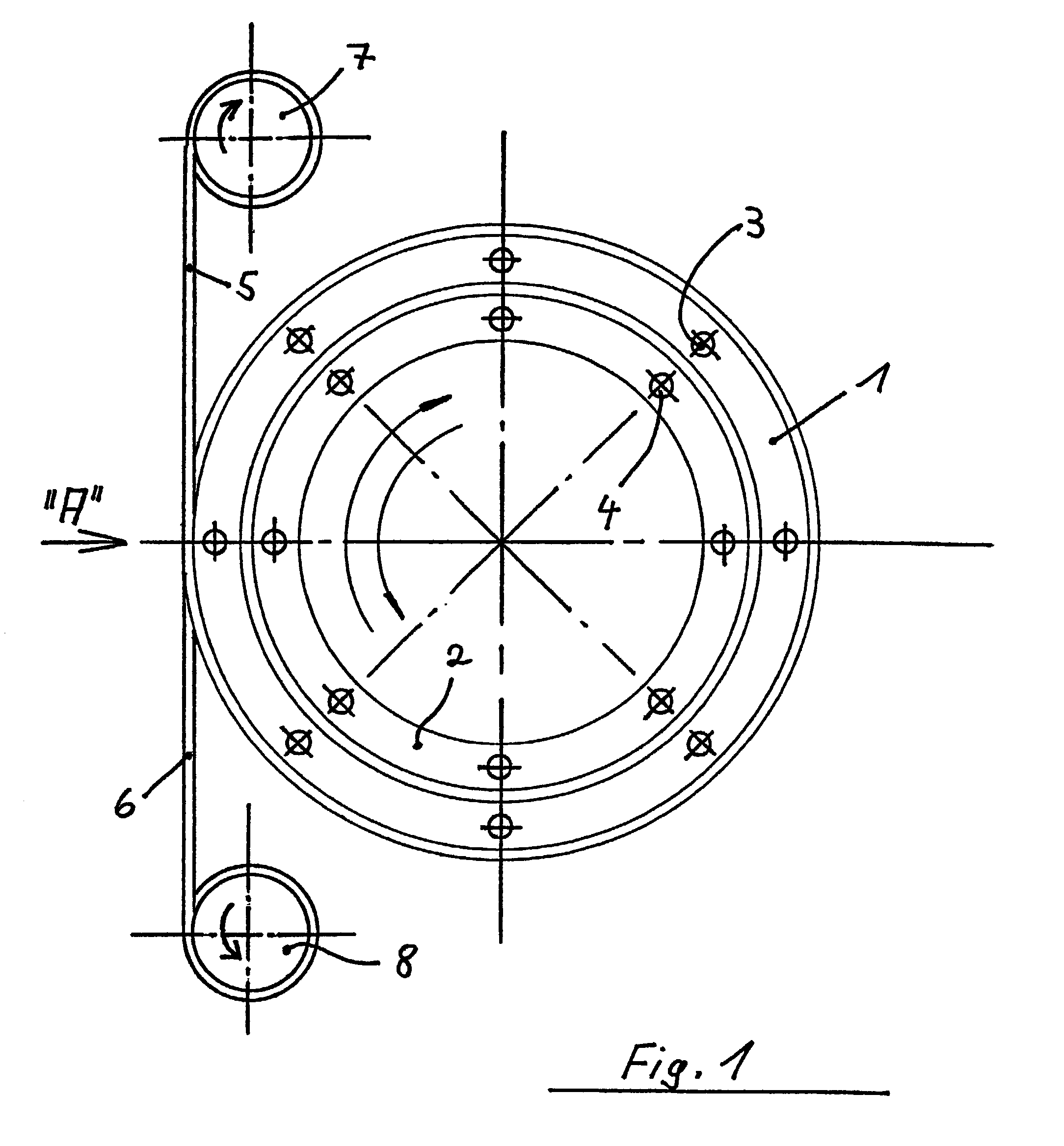Rotary joint mechanism
a rotary joint and mechanism technology, applied in the field of rotary joints, can solve the problems of high production cost, significant maintenance requirement, laborious and thus expensive manufacture of generic rotary joints formed in this way, etc., and achieve the effect of increasing the frictional force necessary for transferring high torque in particular, increasing material demand, and increasing the force transfer
- Summary
- Abstract
- Description
- Claims
- Application Information
AI Technical Summary
Benefits of technology
Problems solved by technology
Method used
Image
Examples
Embodiment Construction
[0020]FIG. 1 illustrates a rotary joint mechanism comprised of a rotary joint that includes an outer ring 1 and an inner ring 2. The outer ring 1 is adapted to be connected to a rotatable machine or system part. For this purpose, the outer ring 1 is provided with connecting holes 3. The inner bearing ring 2 is also provided with connecting holes 4 so that the inner ring 2 can be connected to a fixed machine or system part.
[0021]FIG. 1 also shows that the rotary joint mechanism includes a cable element 5, 6 stretched between two drive spindles 7, 8 so that it encircles the outer ring 1 of the rotary joint one or more times (i.e. one or more complete revolutions). This construction provides a relatively simple way for driving the outer bearing ring 1 by way of the transmission of force through the cable element 5, 6.
[0022]FIG. 2 is a side view of the rotary joint mechanism shown in FIG. 1 as seen from the direction indicated by the arrow A in FIG. 1. It can be seen that in the case of...
PUM
 Login to View More
Login to View More Abstract
Description
Claims
Application Information
 Login to View More
Login to View More - R&D
- Intellectual Property
- Life Sciences
- Materials
- Tech Scout
- Unparalleled Data Quality
- Higher Quality Content
- 60% Fewer Hallucinations
Browse by: Latest US Patents, China's latest patents, Technical Efficacy Thesaurus, Application Domain, Technology Topic, Popular Technical Reports.
© 2025 PatSnap. All rights reserved.Legal|Privacy policy|Modern Slavery Act Transparency Statement|Sitemap|About US| Contact US: help@patsnap.com



